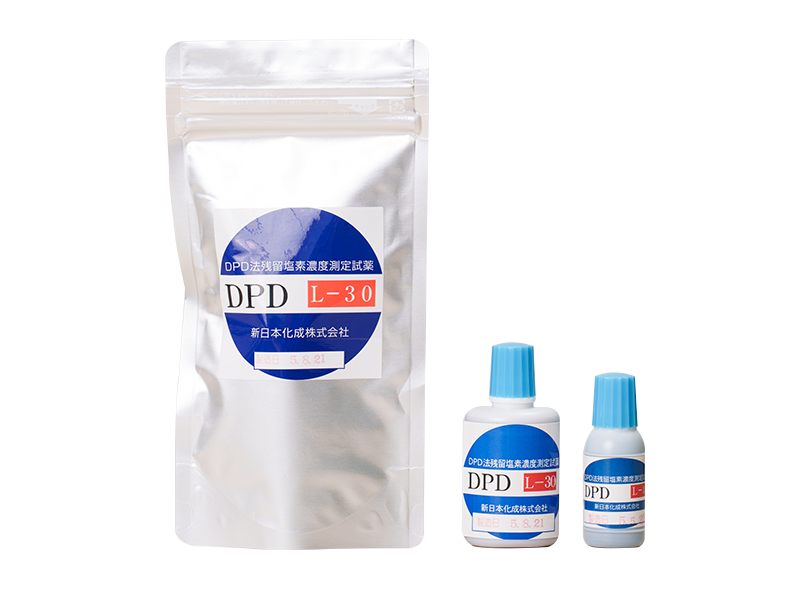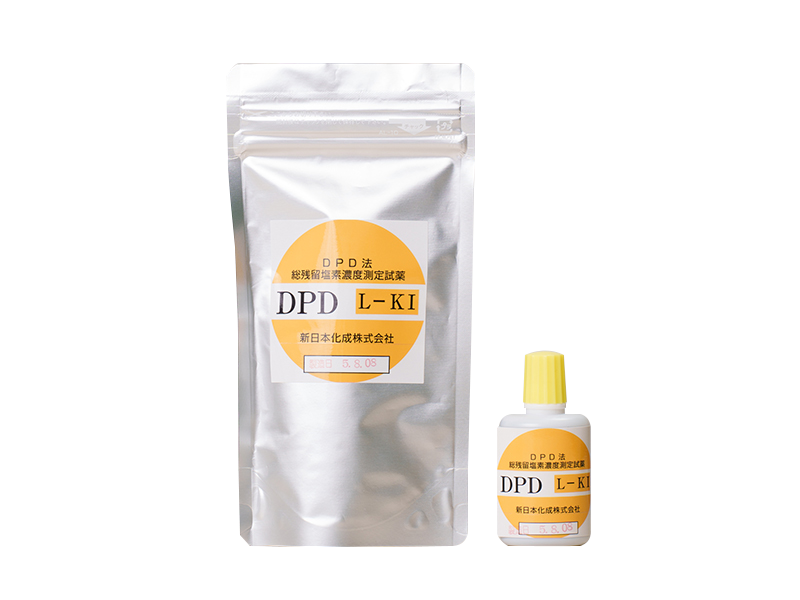Chemicals for swimming pools and aquatic facilities
Readily soluble in water and facilitates measurements
Liquid DPD
We have developed a liquid DPD reagent for residual chlorine concentration measurements.
Liquid DPD is more soluble in water than general tablet or granular DPD reagents, making measurements easier and faster.

Advantages
Liquid DPD is a liquid reagent, which is readily soluble in water without turbidity, allows measurements to be made within a short period of time. The other advantage is that colors are clearly shown on the measuring instrument used, facilitating the measurement.
Also, unlike tablets and granules, it is an environmentally friendly product that does not generate waste after each use. We have received feedback that the product is easy to carry and use on-site, as there is no need to tear the packaging each time, and you can use it by simply applying a few drops like eye drops.
Measurement is possible if the pH and residual chlorine concentration are within the specified range.
Lineup
L-15/L-30/L-120
L-15/L-30/L-120
The L Series products have blue labels and caps, and are used to measure free residual chlorine.
L-15 and L-30 indicate containers with capacities of 15 ml and 30 ml respectively, and the reagent contained is identical. The product is also available in a larger, 120-ml container.

L-KI
L-KI, which has a yellow label and cap, is used to measure total residual chlorine.
Put L-15/30 first, and then put L-KI.

How to use

The method for measuring residual chlorine concentration using liquid DPD is as follows.
- Take 10 cc of sample water and add 2 drops of liquid DPD (L-15/30).
- Shake gently, compare the color with the colorimetric plate on the measuring instrument, and determine the free residual chlorine concentration.
- To measure the total residual chlorine, add 5 drops of L-KI after the process above.
Handling precautions
- Store liquid DPD in a cool, dark place. Exposure to light accelerates deterioration.
- Use within the free residual chlorine concentration range of 0.1 to 2.0 ppm (the range of the colorimetric plate).
- Maintain the pH of the sample water within the range of 7.0±1.0. If the pH falls outside this range, adjust it with a pH adjuster beforehand.
- If the color has become darker, the liquid DPD reagent may have deteriorated, so replace it with a new one.
- Keep out of reach of children.
- In the event of accidental contact with eyes or skin, flush with plenty of water for at least 15 minutes. For any abnormality, get medical advice.
- In the event of accidental swallowing, immediately rinse mouth, and do not induce vomiting, but get medical advice.